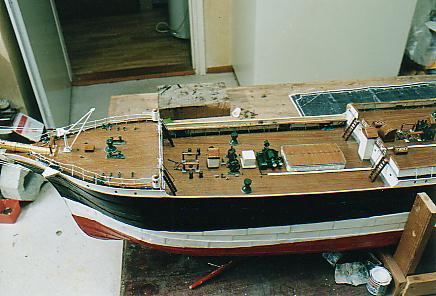
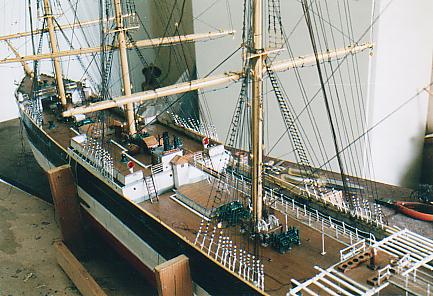
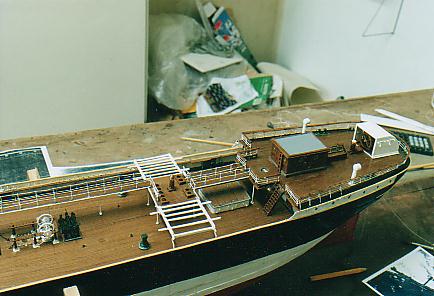
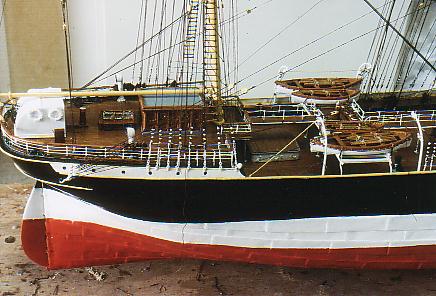
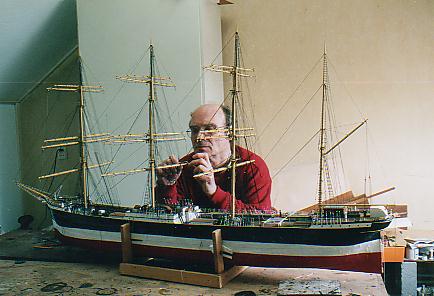
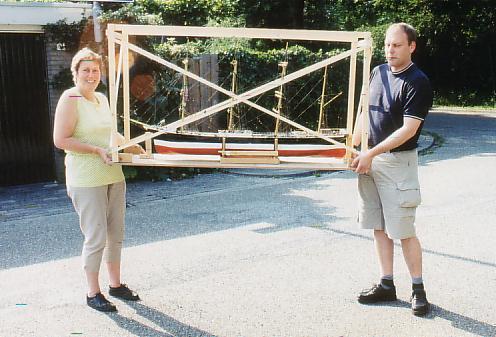
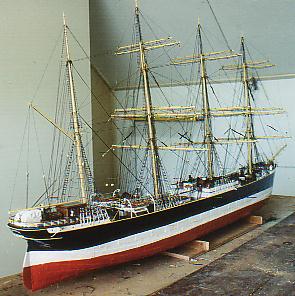
Lawhill was built at Thompson's Caledon shipyard at Dundee for Captain Charles Barrie. She had a one year older sister Jutepolis, later renamed Carthpool, which grounded in 1929 and was the last deepwater sailingship under the British flag. Boths ships were designed for the jute trade, but Lawhill made only two such voyages as this trade was already almost lost for sailing ships. In 1899 she was sold to the Anglo-American Oil Company and was used to transport lamp oil and general cargo to China. During this period she was under command of captain Jarvis who was famous for his improvement of sailing ships.
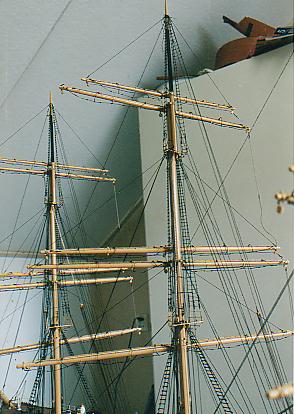
In 1911 Lawhill was sold to a Liverpool owner who resold her for £8500 to the Åland owner August Troberg in 1914. During the Great War she was very profitable, but in 1917 when she had just escaped a German submarine she was sold for £70,000 to Gustaf Erikson. During the height of the submarine war Lawhill could not go to sea, so she was laid up in Nantes. When Russia made a separate peace with the Axis powers the French government took the ship and planned to convert her to a motor vessel. Erikson succeeded in getting his ship back, and the French paid him even for the days that she was idle in Nantes!
In 1918 after the war she sailed again and her captain was the famous Ruben de Cloux. Thanks to the earnings of Lawhill Gustaf Erikson could build up his fleet of sailing ships and so commercial sailing ships survived a further quarter of a century. In 1941 when Finland came in the Second World War on the German side Lawhill was confiscated by the South African government. She sailed with the Finnish crew for a South African owner. In 1948 Lawhill was sold to a Portuguese owner, who did not succeed in getting her sailing again. Laid up in Mozambique, she rotted away fast and was broken up in 1957, after an active life of 56 years. Lawhill had been one of the most successful, possibly the most successful, of all four-masted barques.
As a British sailing ship Lawhill had brace winches. The inventor Captain Jarvis had put them on the ship when she sailed for the Anglo-American Oil Company. Lawhill was built without royalyards, as a baldheader. All masts and spars, except the topgallant masts and uppertopgallant yards, were made out of steel. She was one of the very few ships with the topgallant masts abaft the topmasts. Hoisting yards were moved with classical rope purchases. For the heavy work the ship had a donkey boiler and later a diesel winch.

|  |

|  |

|  |